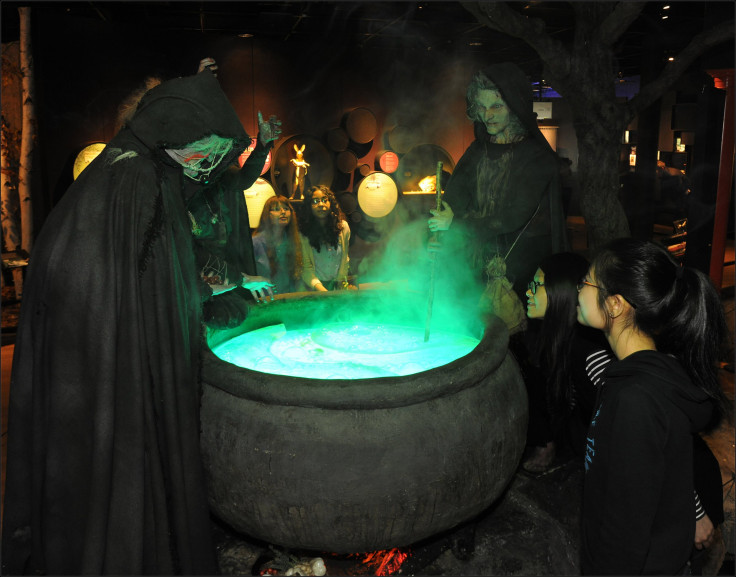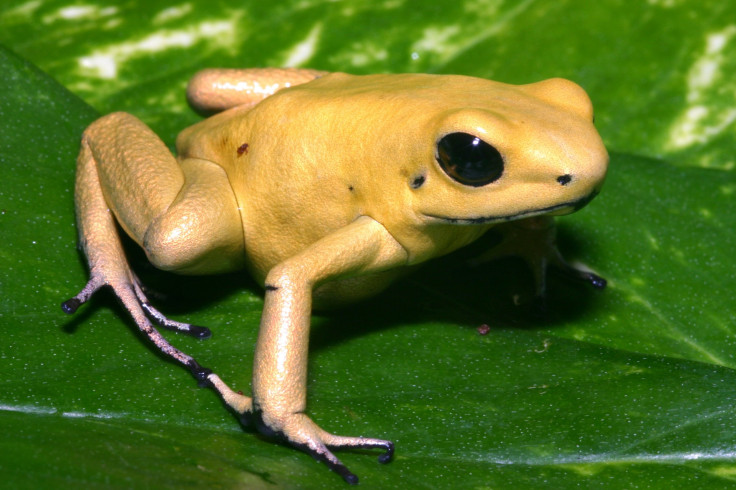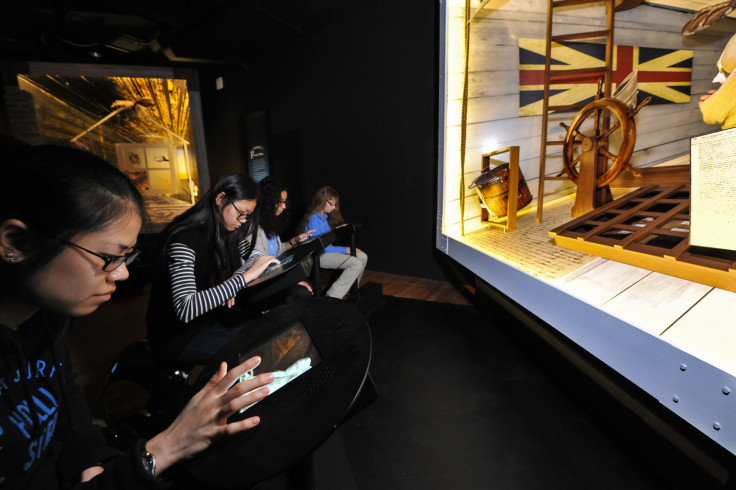'The Power Of Poison' On Display At The American Natural History Museum In NYC
Question: where can you go see one of the deadliest little frogs in the world, alongside a trio of witches from Shakespeare’s “Macbeth” and a mockup of a 19th-century forensic laboratory? Answer: at the American Natural History Museum’s newest exhibit, “The Power of Poison,” which opens November 16. The new feature explores how poisons work in the natural world, and how we humans have repurposed them for our own -- some times nefarious -- ends.
Exhibit curator Mark Siddall has long been fascinated with the hidden power of poisons, even back when he was studying blood parasites and leeches. (Leeches are not poisonous, but Siddall says that after years and years of getting his blood sucked by them, he’s actually developed a bit of an allergy to them). Poisons, he says, are naturally thrilling.
“There’s this obvious concept of danger and the potential for death with poisons, and this runs through history and literature, from Sherlock Holmes to ‘The Hunger Games,’” Siddall says. (The first Sherlock Holmes novel, “A Study in Scarlet,” centers on a murderer who uses poison pills; the world of “The Hunger Games” includes genetically engineered venomous wasps called tracker jackers.)

Indeed, the pages of literature turn out to be peppered with poison. The trio of witches in “Macbeth” – rendered in the museum as detailed, life-size mannequins -- concoct a magic brew that actually turns out to have many naturally poisonous ingredients. The “tongue of dog” that the witches add to their cauldron actually refers to a weed called houndstongue, a toxic weed with reddish-purple flowers.
Siddall says getting live animals into the show was a must for him, and the show features live examples of some powerfully poisonous critters: caterpillars, fish, tarantulas, and a gila monster.

One of the first things that you encounter in "The Power of Poison" is a case with a few live specimens of the golden poison frog. These amphibians aren’t much bigger than a quarter, but in the wild, the golden poison frog’s skin is coated in an alkaloid poison that cuts off the signaling power of your nerves, making your muscles seize up. Scientists think that frog makes its toxins with a little help from the insects that it eats – so the museum’s nontoxic cricket-fed golden poison frogs, while still golden, aren’t actually poisonous.
The show also delves into the natural arms race that ensues between poisonous animals and their predators and prey – grasshopper mice, for example, have ingeniously managed to coopt the venom of their favorite dish, the bark scorpion, and are able to use it to numb their own nerve endings. When stung by the scorpion, the mouse feels no pain.
Kiara Rivas, 10, was previewing the new exhibit with classmates from nearby P.S. 87.
“I love it,” Rivas said. “They have a big book that you can touch and learn things from.”
The big book is an interactive display designed to look like an old botanical volume, albeit one that has animated videos projected onto it and touch-sensitive pages. You can press a drawing of the hemlock plant and see it bloom and produce fruit. Press a portrait of Socrates on the opposite page and it plays a little animation of the philosopher being forced to drink hemlock.

There are other interactive features in the exhibit, too. In one group of stations featuring iPad-based games, visitors attempt to gather clues and solve three puzzling accidental poison cases, from the sickening of 18th-century mariner Captain James Cook while at sea, to a pet dog named Skippy found poisoned in a backyard. Was it the toad that sickened skippy, or the leaky batteries in the trash, or the algae-infected pondwater?
Visitors can watch the birth of forensic toxicology delivered in the form of a live murder mystery show, accented by animation reminiscent of "Monty Python's Flying Circus." A presenter leads the audience through an investigation of John Bodle, a young man accused of poisoning his grandfather’s coffee.
Eventually, we learn that chemist James Marsh had detected traces of arsenic in the Bodle family’s coffeepot, but the signature yellow substance that indicated the presence of the poison had faded by the time Marsh could present the evidence to the jury. Bodle was acquitted, but later confessed to the murder. This infuriated Marsh to such a degree that he devoted himself to creating a foolproof way to demonstrate the presence of arsenic, known as the Marsh test.
The theatrics, Siddall says, are key: “we don’t want to make people just sit down and read a technical bulletin.”
In the last part of the exhibit, “The Power of Poison” teaches visitors about some of the potentially beneficial uses of poisons, from an ingredient in vampire bat saliva called draculin that could help protect stroke patients from blood clots, to a compound extracted from gila monster venom that is now used to treat diabetes. A giant fake yew tree -- which yields toxic needles but also key chemotherapy ingredients -- towers over you as you exit.
For a show so laden with the specter of death, “The Power of Poison” isn’t all that morbid. But there is an undercurrent of mystery, and a little magic, too.
That makes sense, Siddall says; poisons “are unseen, yet powerful substances."
© Copyright IBTimes 2024. All rights reserved.





















